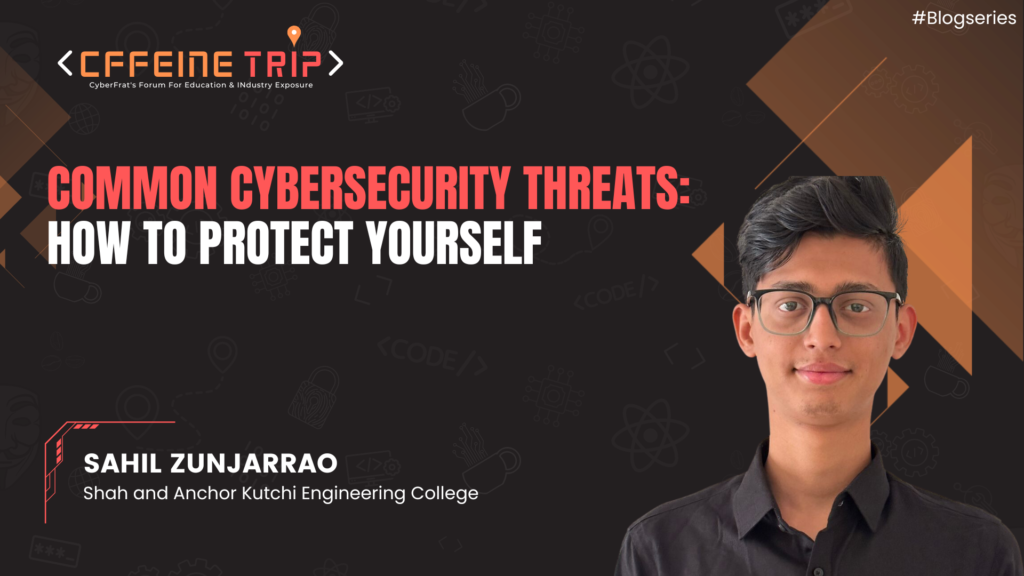
Introduction
In today’s interconnected world, the importance of cybersecurity cannot be overstated. The rapid growth of technology has led to an increase in cyber threats that can compromise your personal data, financial security, and even your identity.
Therefore, this blog post aims to highlight some of the most common cybersecurity threats that individuals face and provide practical tips on how to protect yourself from these threats.
Phishing Attacks
Phishing attacks are one of the most prevalent cybersecurity threats. They involve malicious actors impersonating trustworthy entities to trick individuals into revealing sensitive information, such as passwords or credit card details.
To protect yourself against phishing attacks, follow these guidelines:
Be vigilant: Exercise caution when clicking on links or opening attachments in emails, especially if they are unexpected or from unknown senders.
Verify the source: Always double-check the sender’s email address or contact information before sharing any sensitive information. Legitimate organizations will never ask for passwords or financial information via email.
Use strong, unique passwords: Create strong passwords and avoid reusing them across multiple accounts. Consider using a password manager to securely store your passwords.
Malware Infections:
Malware refers to malicious software that is designed to disrupt, damage, or gain unauthorized access to computer systems. It can be distributed through infected email attachments, compromised websites, or fake software downloads.
So, you can protect yourself from malware infections by following these steps:
Keep your software up to date: Regularly update your operating system, web browsers, and other software to patch security vulnerabilities that malware might exploit.
Install reputable antivirus software: Use a reliable antivirus program that offers real-time scanning and malware removal capabilities. Keep the software updated to stay protected against the latest threats.
Exercise caution with downloads: Only download files and software from trusted sources. Be wary of downloading files from unfamiliar websites or clicking on pop-up ads.
Social Engineering Attacks:
Social engineering attacks rely on psychological manipulation to deceive individuals into revealing sensitive information or performing certain actions.
Attackers may impersonate authority figures, co-workers, or even friends to gain trust. Hence, protect yourself against social engineering attacks with the following precautions:
Be skeptical of unsolicited requests: Verify any unusual requests for personal information or financial transactions through an alternative channel, such as a phone call or in-person conversation.
Think before you share: Be cautious about the information you share on social media platforms. Oversharing personal details can provide attackers with valuable information for social engineering attempts.
Educate yourself: Stay informed about the latest social engineering techniques and scams. Regularly update yourself with the best security practices to recognize and avoid potential threats.
Ransomware Attacks:
Ransomware attacks have become increasingly prevalent in recent years. This type of malware encrypts the victim’s files, rendering them inaccessible until a ransom is paid. To protect yourself from ransomware attacks, consider the following measures:
Backup your data: Regularly back up your important files to an external hard drive or a cloud storage service. This way, even if your files are encrypted, you can restore them from a secure backup.
Be cautious with email attachments: Avoid opening email attachments from unknown or suspicious sources, as they may contain ransomware. If you receive an unexpected attachment, verify its authenticity with the sender before opening it.
Update your spam filters: Enable spam filters on your email accounts to help identify and block malicious emails that may contain ransomware.
Wi-Fi Network Vulnerabilities:
Public Wi-Fi networks can be breeding grounds for cyber threats. Hackers may intercept data transmitted over unsecured networks, potentially compromising sensitive information. Protect yourself when using Wi-Fi networks by implementing these precautions:
Use secure networks: Connect to password-protected Wi-Fi networks whenever possible rather than open/public networks. Public networks are more susceptible to eavesdropping and data interception.
Employ a virtual private network (VPN): A VPN creates a secure, encrypted connection between your device and the internet, safeguarding your data from prying eyes. Use a reputable VPN service when accessing public Wi-Fi networks.
Disable auto-connect: Turn off the auto-connect feature on your device to prevent it from connecting to untrusted networks without your knowledge.
Identity Theft:
Identity theft occurs when an attacker steals someone’s personal information, such as Social Security numbers, credit card details, or login credentials, to impersonate them or commit fraudulent activities. Protect yourself from identity theft with these guidelines:
Secure your personal information: Safeguard sensitive information in physical and digital formats. Store physical documents in a secure location, and use strong passwords or two-factor authentication for your online accounts.
Be cautious when sharing information: Only provide personal information on trusted websites and platforms. Be wary of sharing sensitive details over the phone or through unsolicited emails or messages.
Regularly monitor your accounts: Keep a close eye on your financial statements, credit reports, and online accounts for any suspicious activity. Report any unauthorized transactions immediately.
Social Media Privacy Risks:
Adjust privacy settings: Review and update your privacy settings on social media platforms. Limit the visibility of your posts and personal information to trusted friends or connections.
Be mindful of what you share: Think before sharing personal details, location information, or travel plans. Avoid sharing sensitive information, such as your full address or contact details, publicly.
Regularly review friend or connection requests: Be cautious about accepting friend or connection requests from unknown or suspicious accounts. Check the profiles and ensure they are genuine before adding them to your network.
Conclusion
As our lives become increasingly digital, the risks of cybersecurity threats continue to grow. By taking proactive measures to protect yourself from common threats such as phishing attacks, malware infections, social engineering, ransomware, Wi-Fi vulnerabilities, identity theft, and social media risks, you can mitigate the chances of falling victim to cybercrime.
Additionally, staying informed about the evolving landscape of cybersecurity and being mindful of best practices are essential for maintaining a secure online presence.
Remember, cybersecurity is a shared responsibility, and by prioritizing your own security, you contribute to a safer digital environment for everyone. Stay informed, stay vigilant, and stay protected.

